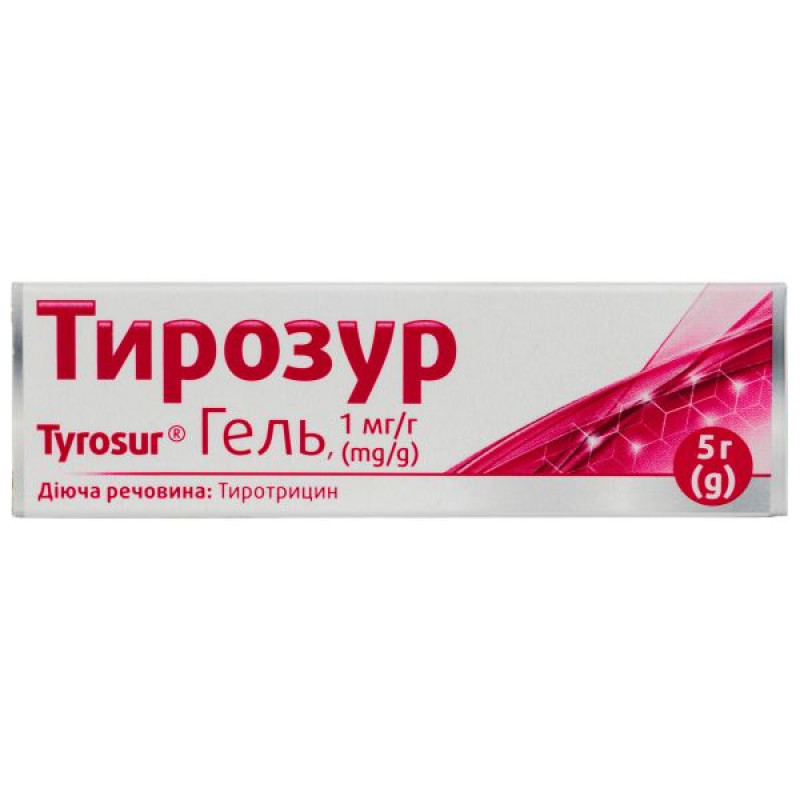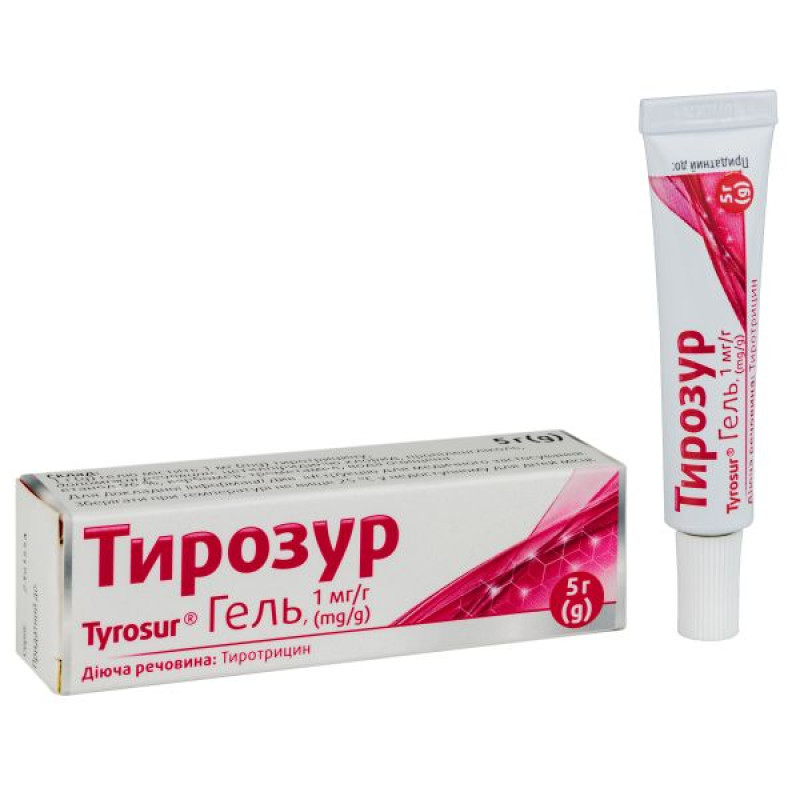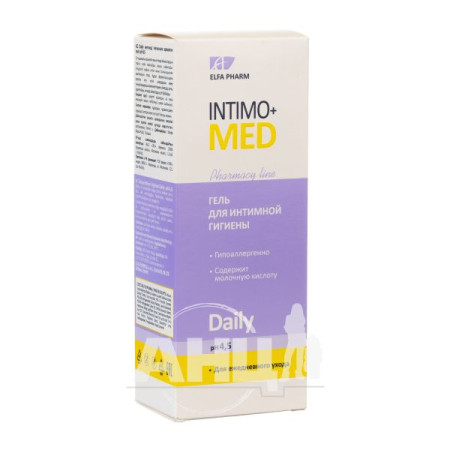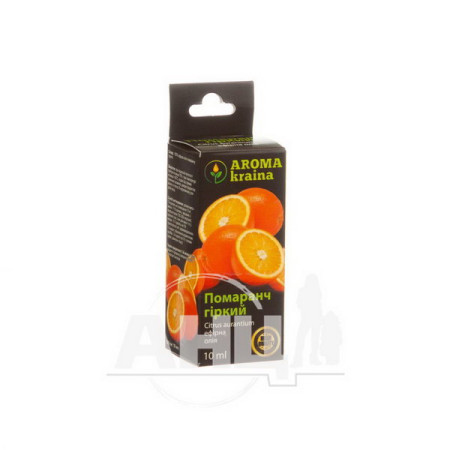Tyrozur gel 1 mg/g tube of 5 g

Instructions for use: Tyrozur gel 1 mg/g, tube 5 g
Composition
active ingredient: tyrothricin;
1 g of gel contains 1 mg of tyrothricin;
excipients: cetylpyridinium chloride, propylene glycol, ethanol 96%, carbomer, trometamol, purified water.
Dosage form
Gel.
Main physicochemical properties: colorless opalescent viscous gel.
Pharmacotherapeutic group
Antibiotics for topical use.
ATX code D06A X08.
Pharmacological properties
Pharmacodynamics
Tyrothricin is a compound of various cyclic and linear polypeptides that exhibit antibacterial activity and is produced as an endotoxin by anaerobic spore-forming Bacillus brevis. This compound contains up to 70–80% tyrocidins (basic cyclic decapeptides) and up to 20–30% gramicidins (neutral linear pentadecapeptides).
Active mainly against gram-positive bacteria Staph. aureus MSSA, Staph. aureus MRSA, Staph. Haemolyticus, Strep. Pyogenes, Strep. Viridans, Enterococcus faecalis, Diplococcus pneumoniae, Corynebact. spp, Neisseria meningitides, some strains of Neisseria gonorrhoeae, fungi and Trichomonas, as well as some gram-negative bacteria and some species of fungi, including Candida.
Tyrothricin has a dose-dependent bacteriostatic or bactericidal effect against microorganisms such as Clostridia.
The release of substances such as nitrogen and phosphates from bacterial cells ensures the effectiveness of tyrocidine. Similar to cationic detergents, tyrocidine destroys the osmotic barrier of bacterial cell membranes. Due to the direct effect on the bacterial cell wall, the action of the drug is not limited to the inhibition of cell growth or division, it also determines the bactericidal effect of tyrocidine.
In addition, gramicidins form cation channels in the bacterial cell membrane, which leads to the loss of potassium and, as a result, to a change in the intracellular concentration of cations and cytolysis. A component such as gramicidin further causes a disruption of phosphorylation processes in the cellular respiratory chain.
Due to the special mechanism of action of tyrothricin, which is not observed in systemic antibiotics, cross-resistance does not occur.
Tyrozur gel accelerates the wound healing process by cleansing the wound bed, as well as stimulating granulation and epithelialization processes.
Pharmacokinetics
It is not known to what extent tyrothricin may be absorbed systemically. High concentrations have been found in the stratum corneum of the skin (after application to an intact surface) and directly in the wound.
Indication
Local treatment of superficial wounds with minor exudate and the presence of superinfection caused by pathogenic microorganisms sensitive to tyrothricin, such as lacerations, scratches, abrasions.
Contraindication
Hypersensitivity to the components of the drug.
Contraindicated for intranasal use; there are reports that this route of administration may cause impaired sense of smell.
Interaction with other medicinal products and other types of interactions
Unknown.
Application features
Caution should be exercised when applying to areas around the eyes as it may cause a burning sensation.
Tyrozur gel contains propylene glycol, which may cause skin irritation.
Ability to influence reaction speed when driving vehicles or other mechanisms
Does not affect.
Use during pregnancy or breastfeeding
There are no data on the effects of Tyrozur gel during pregnancy. Adequate studies of the effects of tyrothricin and cetylpyridinium chloride on reproductive function in animals have not been conducted. The potential risk to humans is unknown, therefore, Tyrozur, gel, should not be used during pregnancy.
It is not known whether tyrothricin or cetylpyridinium chloride passes into breast milk, so the drug should not be used during breastfeeding.
Method of administration and doses
Apply the gel 2–3 times a day in a thin layer to the affected areas of the skin. For small wounds and inflammations of the skin of open areas of the body, it is usually not necessary to cover them. For large injuries or weeping wounds, a protective bandage is recommended, which must be changed after 1–2 days.
The duration of treatment is determined individually, depending on the course of the disease. If improvement is not observed after a week of use of the drug, then the treatment should be reviewed.
Children
If necessary, Tyrozur gel can be used in children of any age.
Overdose
No cases of overdose have been reported.
Adverse reactions
Skin irritation, burning sensation, allergic reactions including erythema, urticaria, contact dermatitis.
Expiration date
3 years.
Do not use after the expiry date stated on the packaging.
The shelf life after first opening the tube is 3 months.
Storage conditions
Store at a temperature not exceeding 25 °C out of the reach of children.
Packaging
5 g of gel in a tube, 1 tube in a cardboard box.
Vacation category
Without a prescription.
Producer
Location of the manufacturer and its business address
Herzbergstrasse 3, 61138 Niederdorfelden, Germany.
There are no reviews for this product.
There are no reviews for this product, be the first to leave your review.
No questions about this product, be the first and ask your question.















